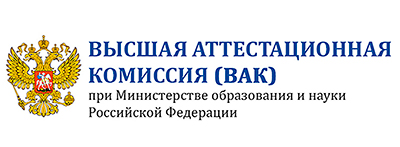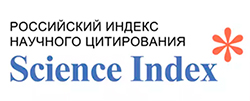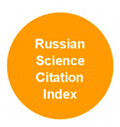Смертность от повреждений с неопределенными намерениями в России и в других странах
Аннотация
Смерти от травм и отравлений, которые эксперты не смогли отнести к убийствам, самоубийствам или несчастным случаям, фиксируются в статистике как смерти от повреждений с неопределенными намерениями. Доля таких смертей может свидетельствовать о качестве статистики причин смерти, в первую очередь, статистики умышленных повреждений. В России почти четыре десятилетия кряду смертность от неопределенных намерений теснит смертность от убийств, самоубийств и несчастных случаев. Прежде это наблюдалось в годы повышения смертности от внешних причин, но начавшееся в 2003 г. небывало долгое для России снижение смертности от внешних причин не переломило тенденцию. Вытеснение остальных внешних причин продолжается несмотря на то, что смертность от повреждений с неопределенными намерениями стала выше смертности от убийств и самоубийств, а ее пропорции выросли десятикратно и достигли высоких значений сравнению с другими странами. В отечественных исследованиях последнего десятилетия доказывается, что высокая пропорция смертности от повреждений с неопределенными намерениями – во многом плод манипуляций со статисткой смертности от внешних причин (явления, названного переводом социально значимых причин в латентную форму).
В статье на основе сравнения с другими странами и обзора отечественных и зарубежных исследований предпринята попытка расширить контекст и рамки дискуссии, включив в нее вопрос о факторах упорного роста этого «технического» показателя и гипотезах о «естественном» характере такой динамики.
Скачивания
Литература
Andreev E. M. (2010). A VBA program for data extraction from the WHO Mortality Database // MPIDR Technical Report TR-2010-004. Rostock. URL: http://www.demogr.mpg.de/en/projects_publications/publications_1904/mpidr_technical_reports/a_vba_program_for_data_extraction_from_the_who_mortality_database_3840.htm (data accessed: 30.01.2014).
Andreev E.M., E.A. Kvasha, T.L. Kharkova (2013). Smertnost' i prodolzhitel'nost' zhizni [Mortality and life expectancy] // Naselenie Rossii 2010–2011: vosemnadcatyj-devyatnadcatyj ezhegodnyj demograficheskij doklad [Population of Russia 2000: the 18th annual demographic report] / Otv. red. A. G. Vishnevsky. M.: Izd. dom Vysshej shkoly ehkonomiki: 385-443.
Andreev E.M., A.G. Vishnevsky (2000). Smertnost' i prodolzhitel'nost' zhizni [Mortality and life expectancy] // Naselenie Rossii 2000: vos'moj ezhegodnyj demograficheskij doklad [Population of Russia 2000: the 18th annual demographic report] / Otv. red. A. G. Vishnevsky. M.: Institut narodnohozyajstvennogo prognozirovaniya RAN, Centr demografii i ehkologii cheloveka: 82-100.
Andreev E.M., D.A. Zhdanov, V.M. Shkolnikov (2007). Smertnost' v Rossii cherez 15 let posle raspada SSSR: fakty i ob"yasneniya [Mortality in Russia at 15 years after the USSR collapse: facts and explanations] / SPERO, №6:115-142. http://spero.socpol.ru/docs/N6_2007-115-142.pdf
Antonova O. I. (2007). Regional'nye osobennosti smertnosti naseleniya ot vneshnih prichin [Regional peculiarities of mortality from external causes of death]. Dissertaciya na soiskanie uchenoj stepeni kandidata ehkonomicheskih nauk: 08.00.05. Moskva.
Arhangel'sky V.N., A.E. Ivanova, L.L. Rybakovsky, S.V. Ryazancev (2006). Demograficheskaya situaciya v Moskve i tendencii ee razvitiya [Demographic situation and demographic development in Moscow]. Centr social'nogo prognozirovaniya.
Begg S., N. Tomijima (2003). Global burden of injury in the year 2000: an overview of methods. Geneva: World Health Organization.
Bjorkenstam C., L.-A. Johansson, P. Nordstrom, I. Thiblin, A. Fugelstad, J. Hallqvist, R. Ljung (2014). Suicide or undetermined intent? A register-based study of signs of misclassification // Population Health Metrics. 12: 1-11.
Bogoyavlensky D.D. (2000). Samoubijstva v Udmurtii // Politika po kontrolyu krizisnoj smertnosti v Rossii v perekhodnyj period / pod red. Shkolnikova V.M., Chervyakova V.V. M.: PROON.
Bogoyavlensky D.D. (2006). Dinamika smertnosti ot otdel'nyh vneshnih prichin. Struktura smertnosti ot vneshnih prichin [Structure and trends of mortality from exterbal causes of death] // Demograficheskaya modernizaciya Rossii. 1900-2000 [Demographic modernization of Russi. 1900-2000] / pod red. A.G. Vishnevskogo. M.: Novoe izdatel'stvo: 340-355.
Breiding M.J., B. Wiersema (2006). Variability of undetermined manner of death classification in the US // Injury Prevention. 12 (SUPPL. 2): ii49–ii54.
Castro E.F. de, F. Pimenta, I. Martins (1989). The truth about suicide in Portugal // Acta Psychiatrica Scandinavica. 80(4): 334–339.
Chang S.-S., J.A.C. Sterne, T.-H. Lu, D. Gunnell (2010). Hidden’ suicides amongst deaths certified as undetermined intent, accident by pesticide poisoning and accident by suffocation in Taiwan // Social Psychiatry and Psychiatric Epidemiology. 45(2): 143–152.
Chervyakov V.V., Shkolnikov V.M., Pridemore W.A., McKee M. (2002). The changing nature of murder in Russia // Social Science & Medicine. 55(10): 1713–1724.
Danilova I., F. Mesle, J. Vallin (2014). Reconstruction of coherent cause-specific mortality time series for Russia and its regions // European Population Conference Budapest, Hungary, 25-28 June. Budapest.
Drumond M. Jr., M.M. Lira, M.D. Freitas, T.M. Nitrini, K. Shibao (1999). [Evaluation of the quality of mortality information by unspecified accidents and events of undetermined intent] // Revista De Saúde Pública. 33(3): 273–280.
Gavrilova N.S., V.G. Semyonova, E. Dubrovina, G.N. Evdokushkina, A.E. Ivanova, L.A. Gavrilov (2008). Russian Mortality Crisis and the Quality of Vital Statistics // Population Research and Policy Review. 27(5): 551–574.
Gjertsen F., L.A. Johansson (2011). Changes in statistical methods affected the validity of official suicide rates // Journal of Clinical Epidemiology. 64(10): 1102–1108.
Gjertsen F., S. Bruzzone, M.E. Vollrath, M. Pace, Ø. Ekeberg (2013). Comparing ICD-9 and ICD-10: the impact on intentional and unintentional injury mortality statistics in Italy and Norway // Injury. 44(1): 132–138.
Hofer P., I.R.H. Rockett, P. Varnik, E. Etzersdorfer, N.D. Kapusta (2012). Forty years of increasing suicide mortality in Poland: Undercounting amidst a hanging epidemic? // BMC Public Health. 12(644):1-9.
Ivanova A.E., T.P. Sabgajda, V.G. Semenova, V.G. Zaporozhenko, E.V. Zemlyanova, S.Yu. Nikitina (2013). Faktory iskazheniya struktury prichin smerti trudosposobnogo naseleniya Rossii [Factors distorting structure of death causes in working population in Russia]. // «Social'nye aspekty zdorov'ya naseleniya» [Social Aspects of Population Health] ehlektronnyj nauchnyj zhurnal. 4(32). URL: http://vestnik.mednet.ru/content/view/491/30/lang,ru/ (data accessed: 20.03.2014).
Ivanova A., V. Semenova, E. Dubrovina (2004). Marginalizacija rossijskoj smertnosti (Marginalisation of Russian mortality) // Demoscope Weekly. №181-182. URL: http://demoscope.ru/weekly/2004/0181/tema01.php (data accessed: 13.11.2014).
Kapusta N.D., U.S. Tran, I.R. Rockett, D. De Leo, C.P. Naylor, T. Niederkrotenthaler, M. Voracek, E. Etzersdorfer, G. Sonneck (2011). Declining autopsy rates and suicide misclassification: A cross-national analysis of 35 countries // Archives of General Psychiatry. 68(10): 1050–1057.
Kolmos L. (1987). Suicide in Scandinavia. An epidemiological analysis // Acta Psychiatrica Scandinavica. 76 (Suppl336): 11–16
Kvasha E.A., T.L. Kharkova (2011). Programmy, napravlennye na snizhenie smertnosti prinyaty. Kakovy ih rezul'taty? [Programs aimed to prevent premature mortality has started: what are their effects?] // Demoscope-Weekly. № 463 – 464, URL: http://demoscope.ru/weekly/2011/0463/analit04.php#_FN_4 (data accessed: 2.05.2014).
KZ SPb (1997). Prikaz Komiteta po zdravoohraneniyu Administracii Sankt-Peterburga ot 18.03.1997 №98 «O vvedenii v dejstvie instruktivno-metodicheskih materialov po kodirovaniyu prichin smerti v medicinskoj dokumentacii».
Meslé F., J. Vallin, V. Hertrich, E. Andreev, V. Shkolnikov (2003). Causes of death in Russia: assessing trends since the 1950s // European Population Conference «Population of Central and Eastern Europe. Challenges and Opportunities» / Irena E. Kotowska and Janina Józwiak, eds. Statistical Publishing Establishment. Warsaw: 389-414. URL: http://demoscope.ru/weekly/knigi/epc.php (data accessed: 11.07.2014).
Meslé F., V. Shkolnikov, V. Hertrich, J. Vallin (1996). Sovremennye tendencii smertnosti po prichinam smerti v Rossii, 1965-1994. [Recent trends in mortality by cause of death in Russia, 1965-1994]. // Donnes de statistiques. Paris: INED, №2 http://demoscope.ru/weekly/knigi/shkol/shkol.html (data accessed: 26.09.2013).
MZ RF (1996). Prikaz Ministerstva zdravoohraneniya Rossijskoj federacii №398 ot 04.12.1996 «O kodirovanii (shifrovke) prichin smerti v medicinskoj dokumentacii».
MZ RF (1998). Prikaz Ministerstva zdravoohraneniya Rossijskoj Federacii ot 07.08.1998 №241 "O sovershenstvovanii medicinskoj dokumentacii, udostoveryayushchej sluchai rozhdeniya i smerti, v svyazi s perekhodom na MKB-H».
MZSR (2009). Pis'mo Ministerstva zdravoohraneniya i social'nogo razvitiya RF ot 19.01.09 №14-6/10/2-178 «O poryadke vydachi i zapolneniya medicinskih svidetel'stv o rozhdenii i smerti»
MZSR (2010a). Prikaz Ministerstva zdravoohraneniya i social'nogo razvitiya RF ot 12.05.10 №346n "Ob utverzhdenii Poryadka organizacii i proizvodstva sudebno-medicinskih ehkspertiz v gosudarstvennyh sudebno-ehkspertnyh issledovanij v byuro sudebno-medicinskoj ehkspertizy»
MZSR (2010b). Prikaz Ministerstva zdravoohraneniya i social'nogo razvitiya ot 04.06.10 №423n "O priznanii utrativshim silu Prikaza Ministerstva zdravoohraneniya Rossijskoj Federacii ot 24 aprelya 2003 g. №161 "Ob utverzhdenii Instrukcii po organizacii i proizvodstvu ehkspertnyh issledovanij v byuro sudebno-medicinskoj ehkspertizy".
Nikitina S.Yu., G.M. Kozeeva (2006). Sovershenstvovanie statistiki smertnosti ot alkogolizma [Improvement of statistics of mortality from dipsomania.] // Voprosy statistiki [Statistical Studies]. №11: 21-23.
O’Carroll P.W. (1989).A consideration of the validity and reliability of suicide mortality data // Suicide Life Threat Behavior. 19(1): 1–16.
Parks S.E., L.L. Johnson, D.D. McDaniel, M. Gladden (2014). Surveillance for violent deaths—national violent death reporting system, 16 states, 2010 // MMWR Surveillance Summaries. 63): 1–33.
Porodenko V.A., V.V. Chernobaj (1999). Sovremennye tendencii v dinamike nasil'stvennoj i nenasil'stvennoj, smerti i problemy ih ucheta [Modern trends in dynamics of violent and non-violent deaths and an issue of their account // Sudebno-medicinskaya ehkspertiza [Forensic-medical expertise]. № 5: 20-23.
Pridemore W.A. (2003). Measuring homicide in Russia: a comparison of estimates from the crime and vital statistics reporting systems // Social Science & Medicine. 57(8): 1343–1354.
Rockett I.R., N.D. Kapusta, R. Bhandari (2011). Suicide misclassification in an international context: revisitation and update // Suicidology Online. 2: 48–61.
Rukovodstvo po kodirovaniyu prichin smerti [Guide to coding of death causes]. M.: CNIIOIZ, 2008. URL: www.mednet.ru/images/stories/files/statistika/organizacionno-metodicheskie_materialy/Rukovodstvo_po_kodirovaniyu_prichin_smerti.pdf (data accessed: 26.09.2013).
Ruzicka Lado T. (1996). A note on suicide I Russia, 1963-1993 // Journal of the Australian Population Association. Vol.16 (2), 1996: 187-193.
Semenova V.G., N.S. Gavrilova, G.N. Evdokushkina, L.A. Gavrilov (2004). Kachestvo mediko-statisticheskih dannyh kak problema sovremennogo rossijskogo zdravoohraneniya [Quality of medical statistics as an issue of contemporary Russian public health] // Obshchestvennoe zdorov'e i profilaktika zabolevanij [Public health and diseases prevention]. (2): 11-19.
Semenova V.G., O.I. Antonova (2007). Dostovernost’ statistiki smertnosti (na primere smertnosti ot travm I otravlenij v Moskve) [Reliability of mortality statistics (on example of injuries and poisoning in Moscow)] // Social’nye aspekty zdorov’ja naselenija [Social aspects of population health].№2. URL: http://vestnik.mednet.ru/content/view/28/30/ (data accessed: 26.09.2013).
Shurygina I. (2013). Smertnost rossijskih detej ot vneshnih prichin [Mortality of Russian children due to external causes) // Demoscope Weekly. №537-538 URL: http://www.demoscope.ru/weekly/2013/0537/demoscope537.pdf (data accessed: 17.10.2014).
Sorenson S.B., H. Shen, J.F. Kraus (1997a). Coroner-Reviewed Infant and Toddler Deaths: Many «Undetermineds» Resemble Homicides // Evaluation Review. 21(1): 58–76.
Sorenson S.B., H. Shen, J.F. Kraus (1997b). Undetermined Manner of Death: A Comparison With Unintentional Injury, Suicide, and Homicide Death // Evaluation Review. 21(1): 43–57.
Tøllefsen I.M., E. Hem, Øivind Ekeberg (2012). The reliability of suicide statistics: a systematic review // BMC Psychiatry. 12(9): 1-11.
Väli M., K. Lang, R. Soonets, M. Talumäe, A.M. Grjibovski Childhood deaths from external causes in Estonia, 2001–2005 // BMC Public Health. 2007. 7(1): 158.
Värnik P., M. Sisask, A. Värnik, A. Yur’Yev, K. Kolves, L. Leppik, A. Nemtsov, D. Wasserman (2010). Massive increase in injury deaths of undetermined intent in ex-USSR Baltic and Slavic countries: Hidden suicides? // Scandinavian Journal of Public Health. 38(4): 395–403.
Värnik, P., M. Sisask, A. Värnik, E. Arensman, C.V. Audenhove, C.M. van der Feltz-Cornelis, U.Hegerl (2012). Validity of suicide statistics in Europe in relation to undetermined deaths: developing the 2-20 benchmark // Injury Prevention. 18(5): 321–325.
Wasserman D., A. Värnik (1998). Reliability of statistics on violent death and suicide in the former USSR, 1970–1990 // Acta Psychiatrica Scandinavica. 98(S394): 34–41.
VOZ (2003). Mezhdunarodnaya statisticheskaya klassifikaciya boleznej i problem, svyazannyh so zdorov'em: MKB-10 [International Statistical Classification of Diseases and Related Health Problems 10th Revision]. V 3-h tomah. Tom 2. M.: Medicina.
Whitt H.P. (2006). Where Did the Bodies Go? The Social Construction of Suicide Data, New York City, 1976–1992 // Sociological Inquiry. 76(2): 167–186.
WHO (2014). WHO methods and data sources for country‐level causes of death 2000‐2012 / Global Health Estimates Technical Paper WHO/HIS/HSI/GHE/2014.7
WHO mortality database. URL: http://www.who.int/healthinfo/mortality_data/en/ (data accessed: 30.01.2014).
























